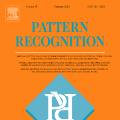Distance measures provide the foundation for many popular algorithms in Machine Learning and Pattern Recognition. Different notions of distance can be used depending on the types of the data the algorithm is working on. For graph-shaped data, an important notion is the Graph Edit Distance (GED) that measures the degree of (dis)similarity between two graphs in terms of the operations needed to make them identical. As the complexity of computing GED is the same as NP-hard problems, it is reasonable to consider approximate solutions. In this paper we present a comparative study of two quantum approaches to computing GED: quantum annealing and variational quantum algorithms, which refer to the two types of quantum hardware currently available, namely quantum annealer and gate-based quantum computer, respectively. Considering the current state of noisy intermediate-scale quantum computers, we base our study on proof-of-principle tests of the performance of these quantum algorithms.
翻译:远程测量为机器学习和模式识别中的许多流行算法提供了基础。 视算法所使用数据的类型,可以使用不同的距离概念。 对于图形形状数据,一个重要的概念是“图形编辑距离”(GED),它衡量两个图形之间在使两个图形具有相同操作所需的差异程度。由于计算GED的复杂性与NP- 硬问题相同,因此考虑近似的解决办法是合理的。 在本文中,我们对两种计算GED的量子方法进行了比较研究:量子反射和变异量子算法,这两类是目前可用的量子硬件,即量子麻醉器和以门为基础的量子计算机。考虑到目前噪音的中间级量子计算机的状况,我们的研究以这些量子算法的性能校准测试为基础。




